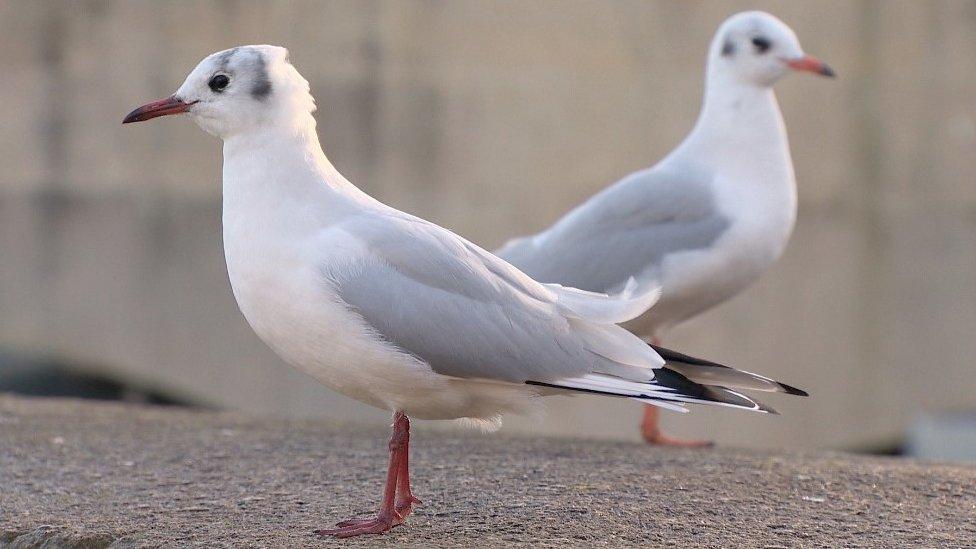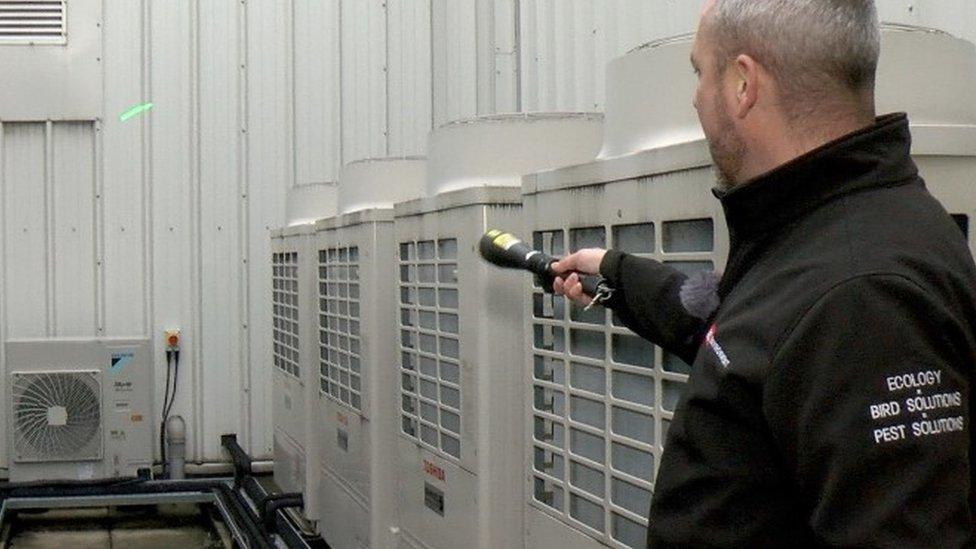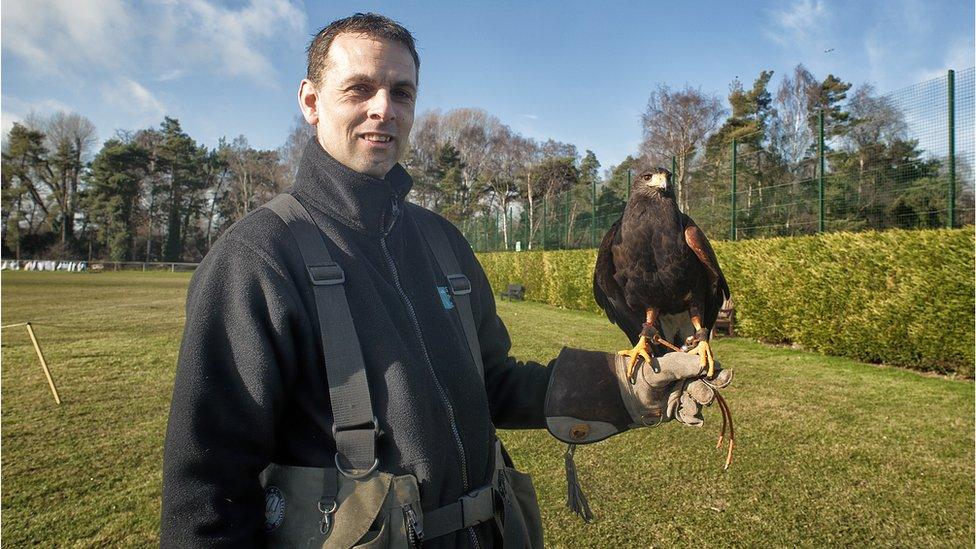Milton Keynes gull problems: Staff faced bird 'poo fear'
- Published

The flock of gulls, which have white heads for most of the year, were moved on using laser beams
Staff at a major shirt firm faced the constant threat of being "covered in poo" due to thousands of gulls roosting on a warehouse building.
About 3,000 black-headed gulls made their home on the roof of Charles Tyrwhitt's warehouse in Milton Keynes, reports BBC Inside Out in the East.
The birds, which produce faeces which can also damage buildings, were dispersed by use of laser beams.
They then found a home at the Mercedes-Benz car dealership in the town.

Staff at the warehouse on James Way said the number of birds meant they had to run the gauntlet when getting into work
Carly Harwood, of Charles Tyrwhitt, said: "There were thousands of them. You had to use an umbrella to get to your car. Otherwise you could be covered in poo."
As gulls are wild birds it is illegal to kill them without a special licence, so if they need to be moved on, they can only be deterred or scared away.

Ian Reece demonstrated a handheld version of the green laser beam used to help clear the birds from the warehouse roof

Ian Reece, of environmental control contractors NBC, uses a green laser beam which travels in a set pattern aimed at disturbing the birds at dusk when they are roosting, without harming them.
"In two weeks all the birds were gone. The building did not have a problem," he said.
Mr Reece said the birds moved on to the Mercedes-Benz dealership and he also helped them get rid of them, but he does not know where they will turn up next.
"They fly off at night, so they are hard to track," he said.
Mr Reece said before they arrived at Charles Tyrwhitt, he had helped get rid of black-headed gulls and a smaller number of herring gulls from a Tesco in Milton Keynes.
British gulls, such as herring gulls, lesser black-backed gulls and great black-backed gulls, are nesting more and more on urban rooftops, drawn to our towns and cities due to an abundance of suitable nesting habitats, ample food and a relative absence of predators.
An RSPB spokesman confirmed the use of laser beams was a known method for dispersing birds, and was harmless as long as the lasers were aimed at the ground/surfaces they birds were using, rather than at the birds themselves.
The story features on Inside Out East on BBC One on Monday, 3 February at 19:30 GMT.
- Published17 February 2017
